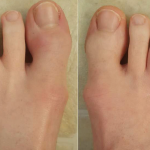At baseline, no patient met five of the seven criteria required to be classified as having minimal disease activity. However, several of the individual components of minimal disease activity were achieved. Example: The criteria for tender entheseal points of ≤1 was met by 57.6% of patients who received placebo, 64.3% of patients who received 6 mg of deucravacitinib and 65.7% of patients who received 12 mg of deucravacitinib.
At week 16, 7.6% of patients who received placebo, 22.9% of patients who received 6 mg of deucravacitinib and 23.9% of patients who received 12 mg of deucravacitinib achieved minimal disease activity. Deucravacitinib treatment compared with placebo treatment led to a numerically greater mean reduction in all minimal disease activity components compared with baseline. Additionally at week 16, more patients treated with deucravacitinib achieved the threshold levels for each minimal disease activity component than patients who received placebo.
This study showed that patients treated for 16 weeks with deucravacitinib achieved higher rates of minimal disease activity than patients who received placebo. This agent is on its way to proving its effectiveness for managing patients with PsA and other immune-mediated diseases. It may soon be added to the armamentarium for these disorders.
Michele B. Kaufman, PharmD, BCGP, is a freelance medical writer based in New York City and a pharmacist at New York Presbyterian Lower Manhattan Hospital.
References
- Kavanaugh A, Coates L, Merola JF et al. Deucravacitinib an oral, selective tyrosine kinase 2 inhibitor, in a phase 2 trial in psoriatic arthritis: Achievement of minimal disease activity and its components [POS1039]. Ann Rheum Dis. 2022; 81(suppl 1):835.
- News release: New two-year deucravacitinib data reinforce durable efficacy and consistent safety profile in treatment of moderate to severe plaque psoriasis. Bristol Myers Squibb. 2022 May 12.



